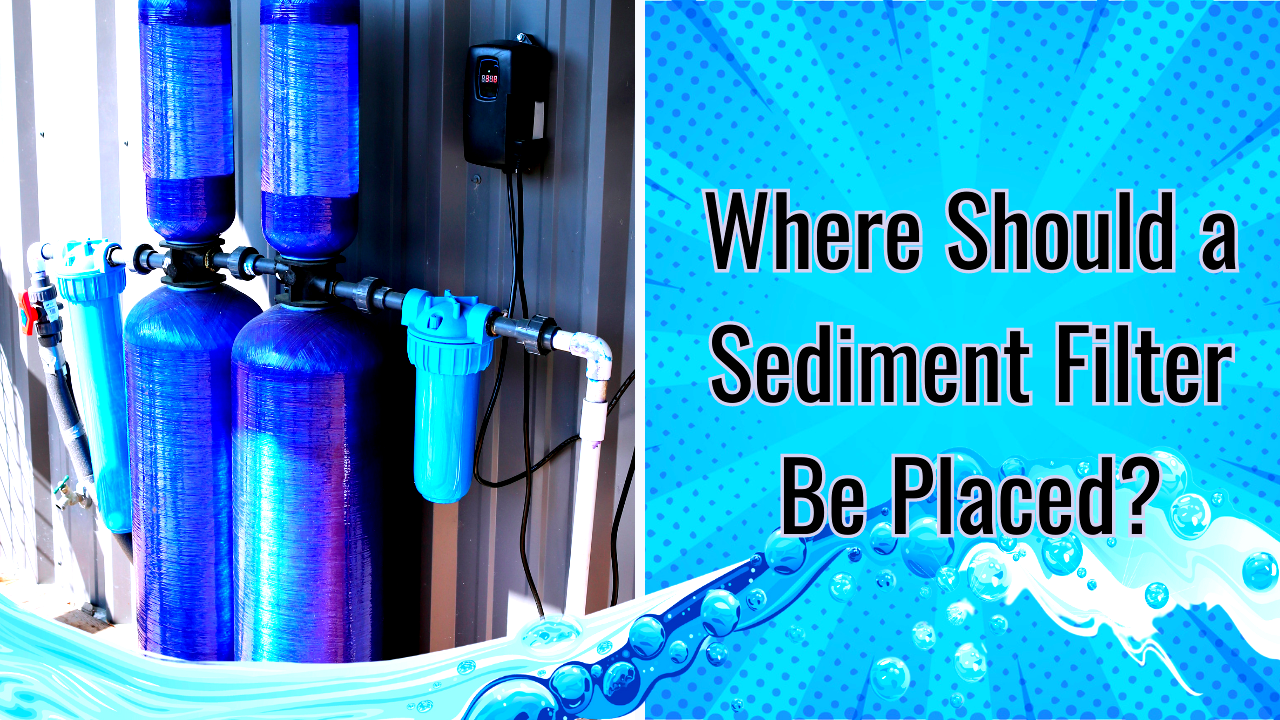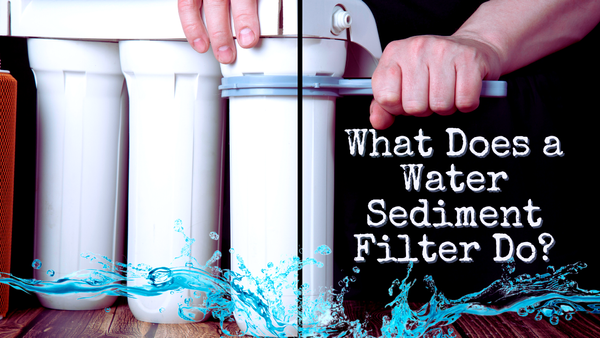Key Takeaways:
- Proper placement of a sediment filter is crucial for maintaining water quality and protecting your plumbing system.
- Sediment filters should be installed upstream of other filters and water treatment systems to ensure optimal performance.
- Regular maintenance and understanding the specific needs of your water system can prevent common issues, such as clogging and pressure drops.
The placement of a sediment filter is critical to maintaining a clean and efficient water system. Whether you rely on well water or municipal water, sediment filters play a vital role in removing particles and ensuring the longevity of your plumbing and appliances. This article will delve into the specifics of where a sediment filter should be placed, considering various factors such as the type of water system, the presence of other filters, and the overall layout of your plumbing.
Understanding Sediment Filters
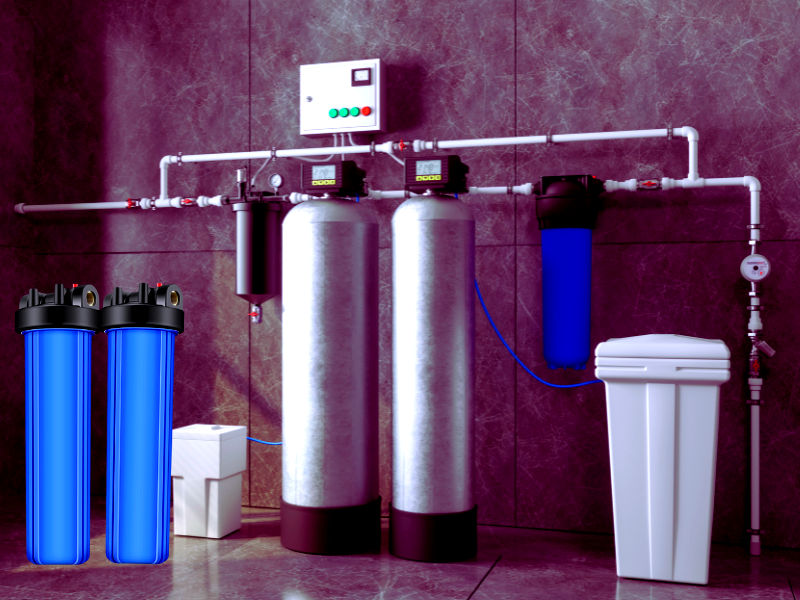
Sediment filters help clean your water by removing sand, dirt, and rust. Without a filter, these particles can build up in your pipes, causing clogs and damaging your appliances. A sediment filter works like a shield, preventing unwanted bits from entering your water system and causing problems.
There are different types of sediment filters you can choose from. Spin-down filters are great for catching bigger particles and can be cleaned easily. Cartridge filters, on the other hand, trap smaller particles that need to be replaced occasionally. Each type works best for different needs, but all help protect your home’s water system.
Benefits of Proper Sediment Filter Placement
Proper sediment filter placement is crucial for optimal performance and longevity of the filter. When installed correctly, sediment filters can provide numerous benefits, including:
- Improved Water Quality: Sediment filters effectively remove particulate matter, sediment, and other contaminants from the water, resulting in cleaner and healthier drinking water. This ensures that your family has access to high-quality water for all their needs.
- Increased Filter Lifespan: Correct placement helps reduce the risk of filter clogging and damage, extending the lifespan of the sediment filter. This means fewer replacements and lower costs over time.
- Enhanced System Performance: Properly placed sediment filters help maintain constant water pressure and flow rates, ensuring that the entire water system operates efficiently. This can prevent issues like pressure drops and ensure a steady supply of water.
- Reduced Maintenance: When sediment filters are installed in the right location, they require less frequent cleaning and maintenance. This saves you time and resources, making it easier to keep your water system in top condition.
- Protection of Downstream Equipment: Sediment filters protect downstream equipment, such as water softeners and carbon filters, from damage caused by sediment and particulate matter. This helps maintain the efficiency and longevity of your entire water treatment system.
By understanding the benefits of proper sediment filter placement, you can ensure that your water system functions optimally and provides clean, safe water for your home.
Placement Before the Pressure Tank
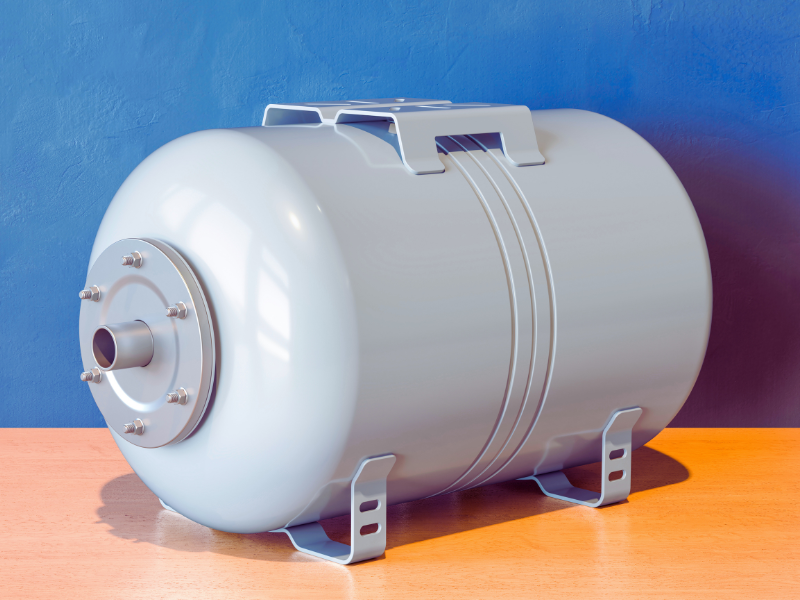
One of the most common questions is whether the sediment filter should be placed before or after the pressure tank. The consensus is that the sediment filter should be installed before the pressure tank. This placement ensures that the water entering the pressure tank is free of large particles, which can cause damage to the tank and other components of the water system.
Installing the sediment filter before the pressure tank also helps maintain the efficiency of the pressure switch and pressure relief valve. These components are crucial for regulating water pressure and preventing damage to the system. However, it is important to consider the filter's pressure rating, as an incorrect rating can affect the system's overall operation, including pressure settings and potential pressure drop issues. By filtering out sediments before they reach these components, you can ensure their longevity and proper functioning.
Placement After the Pump
For those using a well pump, the sediment filter should be placed after the pump but before the pressure tank. This setup ensures that the water pumped from the well is filtered before it enters the pressure tank. Placing the filter after the pump helps protect the pump from damage caused by sediments, which can lead to costly repairs or replacements. It is also crucial to understand the relationship between the pump and pressure tank; proper installation is essential to avoid clogging the system and excessive pressure buildup, which could damage both the pump and the filter over time.
In systems with a submersible pump, the sediment filter should be installed on the main line coming from the well. This placement ensures that all the water entering your home is filtered, providing clean water for all your needs. Additionally, it helps in maintaining the efficiency of the pump and preventing issues like clogging and reduced water flow.
Placement in Whole House Systems
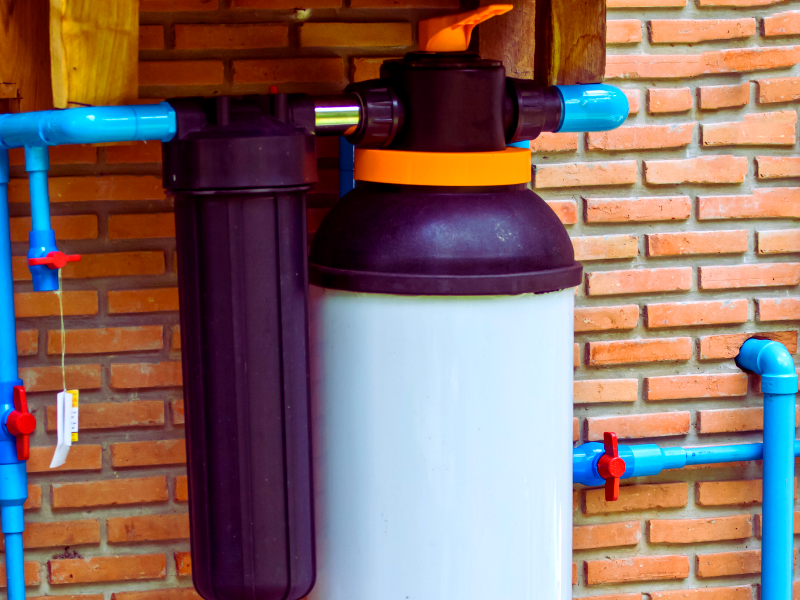
In whole-house water filtration systems, the sediment filter should be the first line of defense. Whole house filters are typically installed on the main water pipe in a house, such as after a pressure tank from a well or lake, or post-water meter for homes with a municipal water supply. The sediment filter should be installed upstream of other filters and water treatment systems, such as carbon filters, water softeners, and UV treatment units. This placement ensures that the water entering these systems is free of large particles, which can reduce their efficiency and lifespan.
For instance, if you have a whole house filter system that includes a carbon filter and a UV treatment unit, the sediment filter should be installed before these components. This setup ensures that the carbon filter and UV unit are not clogged or damaged by sediments, allowing them to function effectively and provide clean, safe water for your entire home.
Placement of Water Heaters
When installing a sediment filter on a water heater, it should be placed on the cold water line before the water enters the heater. This placement helps prevent sediments from accumulating in the water heater and the hot water tank, which can lead to reduced efficiency and potential damage. Sediments can cause the heating elements to overheat and fail, leading to costly repairs or replacements.
By placing the sediment filter before the water heater and hot water tank, you can ensure that the water entering these systems is clean and free of particles. This setup not only protects the heater and hot water tank but also improves the overall water quality in your home, providing clean water for showers, washing dishes, and other household needs.
Placement of Water Softeners
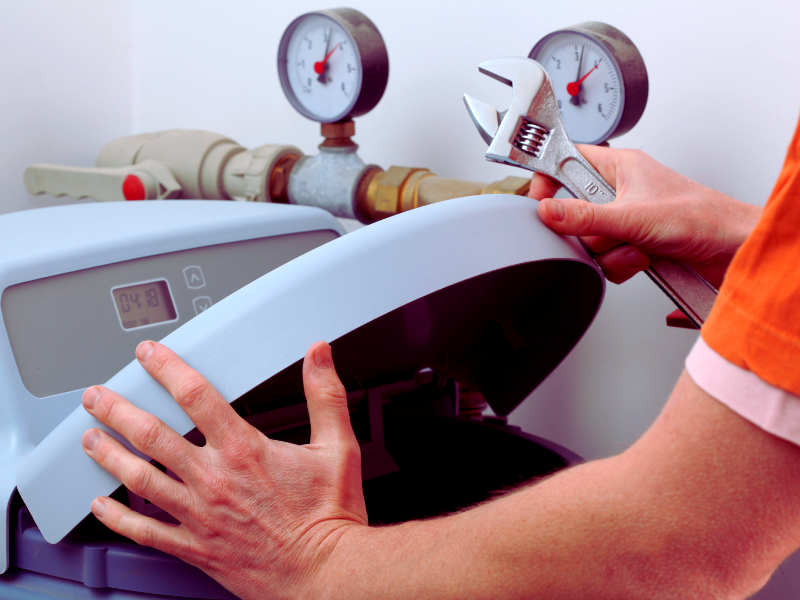
For homes with water softeners, the sediment filter should be installed before the water softener. This placement ensures that the water entering the softener is free of large particles, which can clog the resin bed and reduce the efficiency of the softening process. Sediments can also cause wear and tear on the moving parts of the water softener, leading to frequent maintenance and repairs.
By placing the sediment filter before the water softener, you can protect the softener and ensure that it functions effectively. This setup also helps in maintaining the overall water quality in your home, providing soft, clean water for all your needs.
Placement of Reverse Osmosis Systems
In reverse osmosis (RO) systems, the sediment filter should be installed as the first stage of filtration. This placement ensures that the water entering the RO system is free of large particles, which can clog the RO membrane and reduce its efficiency. The sediment filter acts as a pre-filter, protecting the RO membrane and extending its lifespan.
By placing the sediment filter as the first stage in the RO system, you can ensure that the water is thoroughly filtered and free of sediments. This setup helps in maintaining the efficiency of the RO system and providing clean, safe drinking water for your home.
Placement of Bladder Tanks
For homes with bladder tanks, the sediment filter should be installed before the bladder tank. This placement ensures that the water entering the tank is free of large particles, which can cause damage to the tank and other components of the water system. Sediments can also cause wear and tear on the bladder, leading to frequent maintenance and replacements.
By placing the sediment filter before the bladder tank, you can protect the tank and ensure that it functions effectively. This setup helps in maintaining the overall water quality in your home, providing clean, safe water for all your needs.
Placement of Pressure Relief Valves
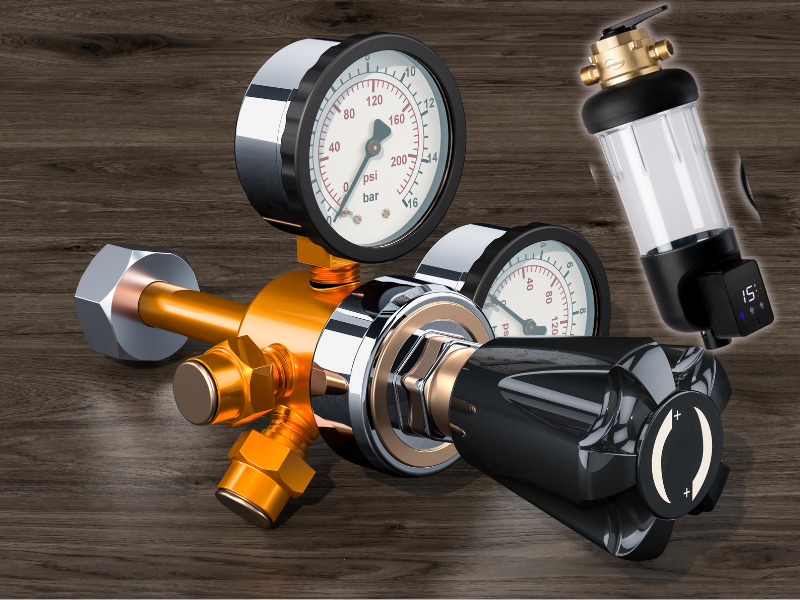
In systems with pressure relief valves, the sediment filter should be installed before the pressure relief valve. This placement ensures that the water entering the valve is free of large particles, which can cause damage to the valve and other components of the water system. Sediments can also cause wear and tear on the valve, leading to frequent maintenance and replacements.
By placing the sediment filter before the pressure relief valve, you can protect the valve and ensure that it functions effectively. This setup helps in maintaining the overall water quality in your home, providing clean, safe water for all your needs.
Placement of Pressure Switches
For homes with pressure switches, the sediment filter should be installed before the pressure switch. This placement ensures that the water entering the switch is free of large particles, which can cause damage to the switch and other components of the water system. Sediments can also cause wear and tear on the switch, leading to frequent maintenance and replacements.
By placing the sediment filter before the pressure switch, you can protect the switch and ensure that it functions effectively. This setup helps in maintaining the overall water quality in your home, providing clean, safe water for all your needs.
Placement of Faucets
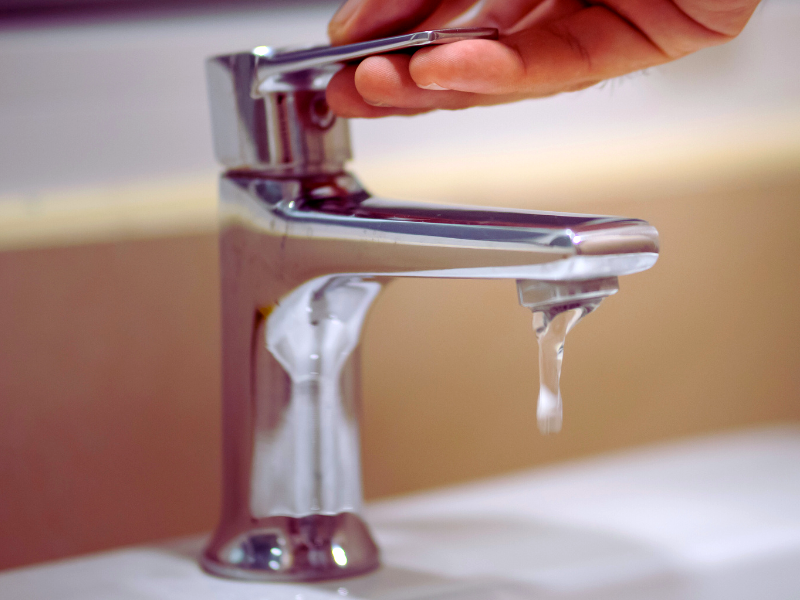
For homes with multiple faucets, the sediment filter should be installed on the main line before the water is distributed to the faucets. This placement ensures that the water entering each faucet is free of large particles, which can cause damage to the faucet and other components of the water system. Sediments can also cause wear and tear on the faucet, leading to frequent maintenance and replacements.
By placing the sediment filter on the main line before the faucets, you can protect the faucets and ensure that they function effectively. This setup helps in maintaining the overall water quality in your home, providing clean, safe water for all your needs.
Placement of Shower Heads
In systems with multiple shower heads, the sediment filter should be installed on the main line before the water is distributed to the shower heads. This placement ensures that the water entering each shower head is free of large particles, which can cause damage to the shower head and other components of the water system. Sediments can also cause wear and tear on the shower head, leading to frequent maintenance and replacements.
By placing the sediment filter on the main line before the shower heads, you can protect the shower heads and ensure that they function effectively. This setup helps in maintaining the overall water quality in your home, providing clean, safe water for all your needs.
Common Mistakes to Avoid
When installing sediment filters, it’s essential to avoid common mistakes that can compromise the performance and longevity of the filter. Some common mistakes to avoid include:
- Installing the Filter Too Close to the Pump: Placing the sediment filter too close to the pump can cause cavitation, leading to damage to both the pump and the filter. Ensure there is adequate distance between the pump and the filter to prevent this issue.
- Installing the Filter Too Far from the Pressure Tank: If the sediment filter is installed too far from the pressure tank, it can result in reduced water pressure and flow rates. Proper placement ensures that the water pressure remains constant and efficient.
- Failing to Size the Filter Correctly: Using an undersized filter can lead to quick clogging, while an oversized filter may not provide adequate filtration. It’s important to choose the right size filter based on your water system’s needs.
- Not Installing a Pressure Relief Valve: Without a pressure relief valve, the filter can become over-pressurized, leading to damage and failure. Always include a pressure relief valve to protect the filter and maintain safe operation.
- Not Testing the Water Before Installation: Failing to test the water before installing the filter can result in the filter not addressing specific water quality issues. Conduct a water test to determine the appropriate type and placement of the sediment filter.
By avoiding these common mistakes, you can ensure that your sediment filter operates efficiently and provides the best possible protection for your water system.
Summary
Putting a sediment filter in the right place is important to keep your water clean and protect your plumbing. By installing the filter before important parts like the pressure tank, water heater, and other filters, you help your water system run smoothly and deliver safe, clean water for your home. Regular maintenance and understanding your water system’s needs can prevent issues like clogs and pressure drops, ensure everything works efficiently, and provide good water for your family.
Keep up with the latest water filter tips and offers, and subscribe to our newsletter today!
FAQ
Where should a sediment filter go in a healthy water system?
In a well-water system, the sediment filter should be placed after the pump but before the pressure tank. This way, the water is cleaned before it enters the pressure tank, protecting your pump and other parts from sediment buildup.
How often do I need to change my sediment filter?
The frequency of filter changes depends on the type and the amount of sediment in your water. Cartridge filters should be changed every 3 to 6 months, while spin-down filters can be cleaned and reused. Monitoring your water quality will help you know when to replace or clean the filter.
Can a sediment filter lower water pressure?
Yes, a clogged sediment filter can lower your water pressure. Cleaning or replacing the filter regularly can help prevent pressure drops and keep your water system running smoothly.
